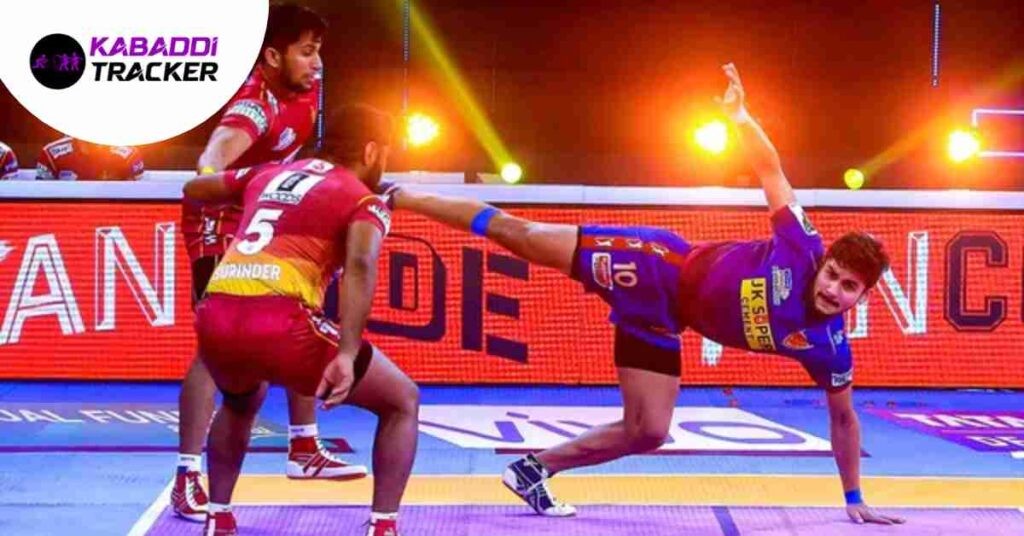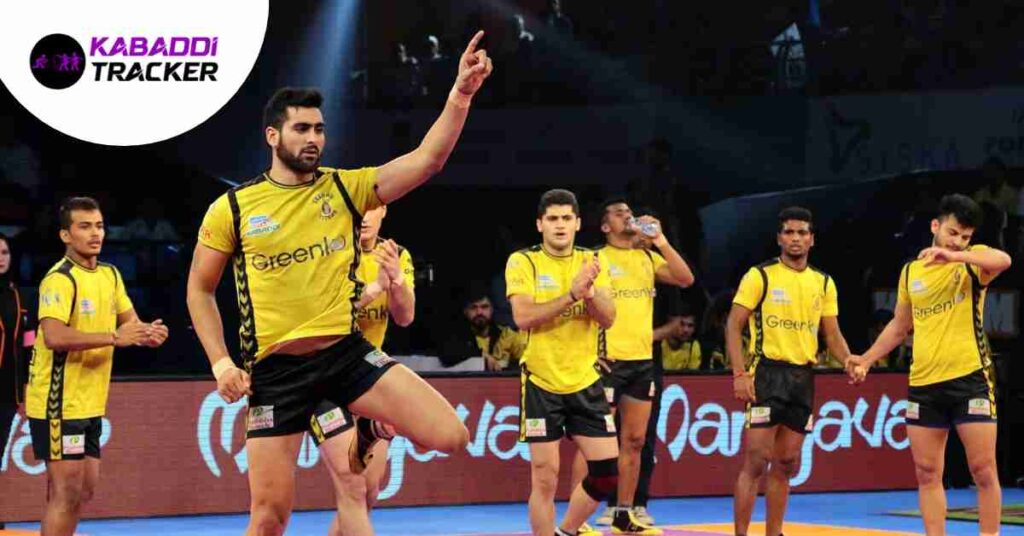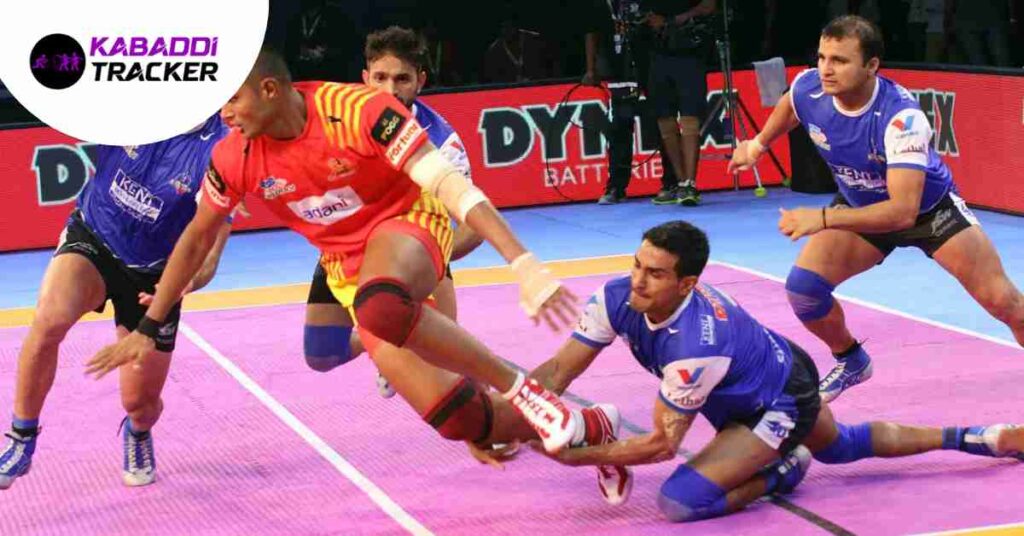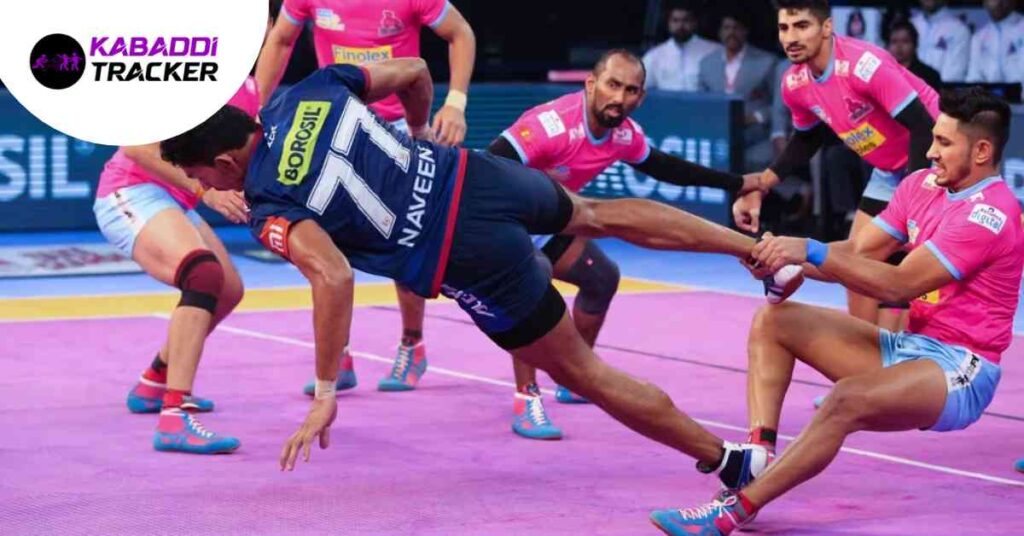Kabaddi, a sport deeply rooted in ancient Indian tradition, has been gaining international recognition and popularity in recent years. Known for its blend of strategy, strength, agility, and teamwork, Kabaddi is a captivating sport that has evolved over centuries.
It is not only a competitive game but also a cultural representation of endurance and unity. In this article, we will delve into the intricacies of how Kabaddi is played, exploring its rules, techniques, and the spirit that drives players to succeed on the mat.
The Game of Kabaddi : An Overview
Kabaddi is a contact team sport that originated in ancient India and has since found its way onto the world stage. The sport is played by two teams, each consisting of seven players on the field at a time. The objective of the game is for a player, known as a “raider,” to enter the opponent’s half of the court, tag as many defenders as possible, and return to their own half without being tackled.
Meanwhile, the defending team, known as the “antifouling team,” attempts to stop the raider by tackling and holding them, preventing them from returning to their half.
Kabaddi Gameplay and Kabaddi Rules
Kabaddi is played on a rectangular court that is divided into two halves, with a midline that separates the two teams. Each half is further divided into several zones. The raider, before entering the opponent’s half, takes a deep breath and continuously chants “kabaddi, kabaddi” to prove that they are doing so in one breath. This breath control adds an additional layer of challenge to the game.
Also Read – Mohit Narwal Kabaddi Academy
The raider’s primary goal is to tag defenders and return to their half while chanting the word “kabaddi.” A successful tag earns points for the raider’s team, while defenders aim to stop the raider’s progress and, if possible, hold them back until they run out of breath and need to return to their half. If a raider is tackled and unable to return to their half, the defending team scores a point.
Defensive Strategy
Defending in Kabaddi requires a mix of anticipation, teamwork, and quick reflexes. Defenders form a chain, holding hands, to create a solid barrier for the raider. As the raider enters their territory, defenders try to tackle the raider by grabbing them and immobilizing them. Successful tackles are crucial for the defending team’s strategy, as they can prevent the raider from earning points and even turn the tide of the game.
Raider’s Skill Set

The raider, on the other hand, needs to employ a variety of techniques to outwit the defenders. The art of Kabaddi lies in the raider’s ability to swiftly tag defenders and escape their grasp. A raider must be agile, have quick decision-making skills, and possess the physical strength to break free from a tackle. Deception and footwork are vital tools in a raider’s arsenal, as they strive to evade defenders and secure points for their team.
Strategies and Teamwork

Kabaddi is not merely a sport of individual skill; it is a game of coordinated teamwork and strategy. Teams develop tactics to exploit their opponents’ weaknesses while shoring up their own defenses. Successful raids are often the result of precise teamwork, with teammates creating distractions and openings for the raider to exploit.
Additionally, defenders coordinate their efforts to anticipate the raider’s movements and execute successful tackles.
Kabaddi is a captivating sport that embodies the essence of physical prowess, mental agility, and collaborative teamwork. With its origins deeply rooted in Indian tradition, the game has transcended borders and cultures, captivating audiences around the world.
Also Read – What are some kabaddi techniques or tips for raiding
As players engage in thrilling raids and strategic defensive maneuvers, Kabaddi showcases the strength of the human spirit and the power of unity on the field.
The sport of Kabaddi teaches us that success is not just about individual achievement but also about the collective effort of a team working harmoniously toward a common goal. As the game continues to gain global recognition, its legacy as a testament to human perseverance and camaraderie remains unwavering.
So, whether on the dusty fields where it originated or under the bright lights of international arenas, Kabaddi will always stand as a reminder of the indomitable spirit of competition and the beauty of working together as one cohesive unit.
Kabaddi Defense Positions
Chain Formation in Kabaddi
At the heart of Kabaddi defense lies the chain formation, a strategic arrangement that enables defenders to create a strong barrier against raiders. The chain formation involves defenders linking arms and forming a human chain, often by holding hands.
This configuration helps in establishing a physical blockade that a raider must overcome to reach the other half of the court.
Corner Defenders in Kabaddi

Among the defenders in the chain, the corner defenders hold a pivotal position. There are two corner defenders on each side of the chain, and their task is to trap the raider and prevent them from escaping. These defenders are usually the most experienced and skilled in executing tackles.
They are responsible for grabbing the raider’s leg or arm and immobilizing them. Their strategic positioning ensures that the raider has limited space to maneuver, making it difficult for them to evade the tackle.
Cover Defenders in Kabaddi
Flanking the corner defenders are the cover defenders. These players provide support to the corners and play a crucial role in assisting with tackles. Cover defenders anticipate the raider’s movements and act as a backup to the corners, ensuring that the raider doesn’t slip through the chain.
They also help in maintaining the integrity of the chain formation by filling gaps and preventing raiders from finding weak spots.
Bonus Line Defender in Kabaddi
The bonus line defender, also known as the “stopper,” is positioned near the bonus line, which is a line on the opponent’s side of the court. The stopper’s primary responsibility is to prevent the raider from touching the bonus line and earning extra points.
They also play a vital role in delaying the raider’s return to their own half, giving the rest of the defenders more time to execute a successful tackle.
Kabaddi Strategies and Kabaddi Techniques

Kabaddi defense is not just about physical strength; it involves a combination of anticipation, timing, and teamwork. Defenders must predict the raider’s movements and respond quickly to their actions. Some common defensive techniques include:
- Double Tackle: This involves two defenders simultaneously grabbing the raider and attempting to immobilize them. The coordination between the two defenders is essential to execute a successful double tackle.
- Ankle Hold: A defender grabs the raider’s ankle and attempts to hold them back. An ankle hold can be effective in slowing down the raider’s progress and providing other defenders with an opportunity to support.
- Thigh Hold: Defenders target the raider’s thigh, attempting to restrict their movement and create an opening for other defenders to join in the tackle.
- Dash: In a dash, a defender aggressively charges at the raider with the intention of pushing them out of bounds or into their own half. Timing is crucial for a successful dash.
- Communication and Unity
- A strong defense in Kabaddi relies on seamless communication and unity among defenders. Players must coordinate their movements, call out information about the raider’s position, and work together to execute tackles.
Effective communication prevents confusion and ensures that defenders are always aware of the situation on the mat. - Adaptability and Flexibility
- Successful Kabaddi defenders possess adaptability and flexibility. They must be quick thinkers who can adjust their strategies based on the raider’s approach. Defenders also need to be physically agile to swiftly react to the raider’s movements and execute tackles from various angles.
In the world of Kabaddi, defenders are the unsung heroes who stand strong, forming an unyielding barrier against the raiders’ advances. Through strategic formations, impeccable timing, and coordinated teamwork, defenders thwart raiders’ attempts and contribute significantly to their team’s success.
The corner defenders, cover defenders, bonus line defender, and the entire defensive unit collectively demonstrate the essence of Kabaddi’s fierce and captivating gameplay. As the sport continues to captivate audiences around the world, the art of Kabaddi defense remains an integral part of the game’s rich legacy, showcasing the fusion of physical skill and strategic acumen.





